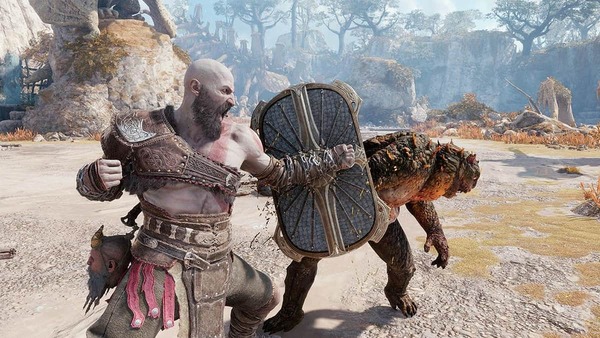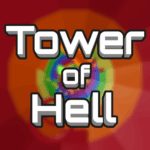Zoonomaly is a first-person indie horror and puzzle game where players awaken inside a surreal, decaying zoo filled with monstrous anomalies. Developed by Lights Are Off, the game blends stealth, logic puzzles, atmospheric horror, and nonlinear exploration in a twisted open-world setting. Unlike traditional horror games that rely on jump scares or combat, Zoonomaly thrives on psychological pressure, brain-teasing challenges, and the eerie ambiance of an abandoned wildlife sanctuary gone wrong.
In this article, we’ll dissect every element of Zoonomaly, from its core mechanics and storyline to design choices and long-term player impact. We’ll also analyze its strengths, flaws, and offer an expert rating at the end.
The Origins of Zoonomaly’s Concept
The idea for Zoonomaly reportedly came from the developer’s fascination with liminal spaces, urban decay, and cryptid-like creatures. Set inside a fictional zoo overtaken by experimental animal hybrids, the game was released as an indie horror title in 2024.
Inspiration and Themes
The game takes inspiration from titles like Amnesia: The Dark Descent, The Stanley Parable, and SCP Containment Breach. However, it mixes these influences with a heavy emphasis on puzzle-solving and an uncanny tone that feels both comedic and disturbing.
A Zoo of Broken Rules
Instead of presenting animals as passive NPCs or standard enemies, Zoonomaly reimagines them as highly intelligent, often unpredictable anomalies with their own rules. This leads to some of the game’s most unique moments, where players must outthink—not outrun—the threats.
First Moments: Waking in the Unknown
Players start with no context, inside a broken-down security office deep within the zoo. Your only direction is a mysterious voice on a radio and a strange artifact known as the "Bloom O'Bang."
No Tutorial, Just Tension
There’s no formal introduction. Instead, you're encouraged to learn through exploration and experimentation. Early tension builds through eerie audio design, environmental cues, and the unsettling behavior of nearby entities.
Initial Objectives
You're tasked with recovering a set of broken key shards hidden across the zoo’s biomes. These shards are locked behind puzzles, each guarded or sabotaged by one of the zoo’s strange “residents.”
Puzzle Mechanics and Core Gameplay Loop
Unlike most horror games that focus on survival or chase scenes, Zoonomaly is primarily a puzzle game with horror elements layered in.
Types of Puzzles
-
Logic circuits
-
Environmental manipulation
-
Pattern recognition
-
Sound-based riddles
-
Physical navigation challenges
Each enclosure has its own logic, and learning the behavior of the zone's anomaly is essential to success.
Progression Through Shards
Solving puzzles grants you shard pieces. Gathering all the shards opens the final gate and reveals the truth behind the Zoonomalies.
Enclosure Design and Nonlinear Exploration
Zoonomaly features a nonlinear layout, giving players freedom to explore biomes in any order. Each area is themed around a former animal exhibit, now corrupted by anomalies.
Unique Zones
-
Reptile House – Temperature-based riddles and crawling creatures.
-
Aviary – Audio illusions, invisible enemies, and echo puzzles.
-
Aquarium Tunnel – Low-light underwater navigation.
-
Big Cat Plains – Wide open space with a stalking predator anomaly.
Player Agency
You're never forced down a specific route. This open-ended structure boosts replayability and encourages different problem-solving strategies.
Monsters and Anomaly Encounters
There’s no combat in Zoonomaly. Every encounter with a monster is a puzzle in itself. Some can see you only if you move. Others mimic human voices or change form.
Types of Anomalies
-
The Watcher – Immobilizes players with its gaze.
-
Echo Sloth – Lures you with riddles and rhymes.
-
Skinbark – A tree-animal hybrid that blends into its environment.
-
Rhizodon – A water-based horror that reacts to sound.
Tools to Survive
The "Bloom O'Bang" helps detect hidden creatures. Decoys and light manipulation can be used to create safe paths.
Narrative Unfolding and Lore Discovery
The deeper you go into the zoo, the more layers of its backstory unfold—told through scraps of notes, voice logs, and environmental storytelling.
Themes of Control and Mutation
The game explores genetic manipulation, failed containment protocols, and the ethics of experimentation. The zoo was a front for a much darker project gone wrong.
Subtle Storytelling
No cutscenes, no forced exposition. Instead, clues are scattered, and it’s up to you to piece together what happened.
Sound, Art, and Atmosphere
Zoonomaly succeeds greatly in building unease through aesthetic and audio, despite being an indie project.
Visual Presentation
-
Stylized but eerie environments
-
Glitchy lighting and flickering signage
-
Creepy motion design for monsters
Audio as a Game Mechanic
-
Creatures can be heard breathing or muttering
-
Puzzle clues often rely on audio feedback
-
Sudden silence is often more terrifying than sound
Inventory, Tools, and Player Mechanics
There’s no combat, but players do manage a basic inventory of puzzle items and tools. These include:
-
Puzzle pieces
-
Audio recorders
-
Battery packs
-
Enclosure-specific keys
Limited Interactivity, Strategic Use
Items aren’t used often but are critical when needed. Overusing tools may backfire, especially in zones with noise-sensitive anomalies.
Endgame, Variants, and Replayability
Zoonomaly offers multiple endings based on the order and method of solving puzzles.
Types of Endings
-
Escape Ending – You survive and escape, but questions remain.
-
Containment Ending – You trap the anomalies forever but at a cost.
-
Integration Ending – The most cryptic and philosophical path.
Why Replay?
-
Different puzzle paths
-
Dialogue variation
-
Challenge runs (no tool use, speedruns, etc.)
Conclusion
Zoonomaly is a breath of fresh air in the indie horror genre. It’s not loud or gory—it’s subtle, brainy, and unsettling in a way that sticks with you. With its imaginative creature designs, layered puzzles, and eerie open-world setting, it’s a game that rewards patience, curiosity, and clever thinking. If you’re a fan of puzzle-based horror and narrative exploration, Zoonomaly is a hidden gem worth uncovering—one strange shard at a time.


























